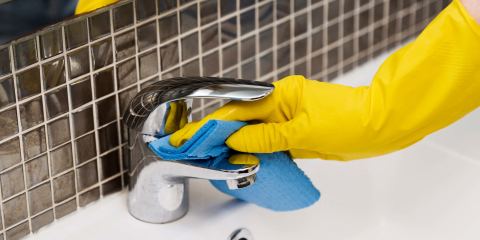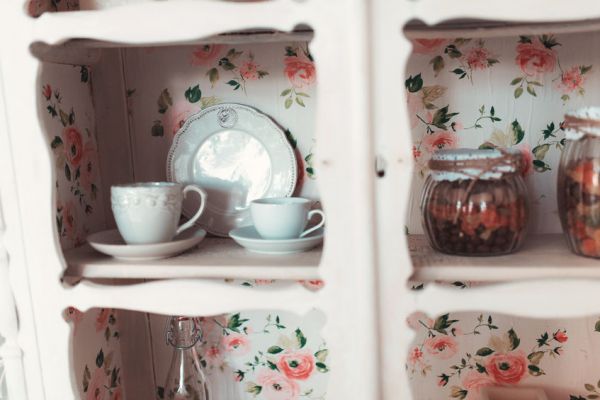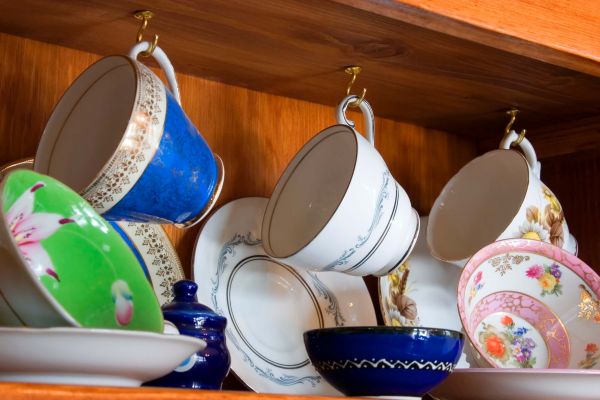When you first move into a new place, it can be tempting to collapse on the nearest soft surface and catch some much-needed rest. A brief repose may be well-deserved, but the unavoidable move-in tasks await—boxes are begging to be unpacked, furniture needs to be shifted around, and, of course, you need to clean.
Cleaning a new home is the first thing many of us do when we first move into a new place. Even if it was professionally cleaned prior to your move-in, there’s something about cleaning it yourself that really makes a new house or apartment feel like home.
In the midst of a pandemic, giving your new home a thorough cleaning before you start unpacking is more important than ever—moving is riskier than usual, with a greater chance of exposure to illness throughout the process, especially if you’re moving long distance.
To reduce your risk of spreading a virus after you move, you may wish to self-isolate for 14 days after your move-in, especially if you’re moving long distance. Some states may even require you to self-isolate if you’re arriving from out of state. If you’re stuck at home, giving your new place a thorough scrub is a great way to stay occupied.
According to the CDC, the novel coronavirus that causes COVID-19 can live for up to 3 days on plastic and stainless steel surfaces, so even if your new place has been empty for a day or two, you’ll still want to give it a good cleaning before you begin unpacking. But when it comes to cleaning in a pandemic, your normal new-home cleaning routines may not be effective. Keep reading for our advice on how to deep clean your new home.
Cleaning vs. disinfecting
The most important thing to keep in mind in a pandemic is that “cleaning” is not the same as “disinfecting”:
- Cleaning involves using regular soap and water to remove dirt, grime, and debris.
- Disinfecting involves using a chemical agent like bleach to help kill germs, such as the novel coronavirus.
While simply “cleaning” your home may have been sufficient a year ago, in a pandemic you’ll want to ensure that you are also adequately disinfecting the surfaces in your new home.
You should always clean before you disinfect—disinfecting won’t do much if you’re working with a dirty surface. Make sure you give those countertops, cupboards, and any other surfaces or high-touch areas a good clean before wiping them down with a disinfectant.
What cleaning materials should you use?
In a pandemic, your normal cleaning supplies may not be strong enough to truly disinfect your surfaces.
Bleach, isopropyl alcohol, and hydrogen peroxide are all recommended by health authorities. Resist the urge to use DIY or natural cleaning materials—cleaners containing vinegar, lemon juice, and baking soda are not considered effective against viruses and are not registered disinfectants by the U.S. Environmental Protection Agency or the CDC.
How to clean your home in a pandemic
- Start by cleaning surfaces. Mop, dust, vacuum, and clean surfaces using soap and water to remove dirt and other grime.
- Disinfect surfaces using a compound that kills microorganisms like viruses and bacteria. Bleach, alcohol, or hydrogen peroxide-based disinfectants are best. Follow the directions carefully—they will tell you if the solution is effective against viruses and what surfaces it can be used on, as well as something called “contact or dwell time”, which indicates how long the surface must remain wet in order for viruses to be killed.
- Clean and disinfect high-touch surfaces frequently.
Start here: Frequently touched spots
The first thing you should do when you enter your new home—before you collapse on the couch—is disinfect things you (and others) touch often, including:
- Door knobs inside and outside the home
- Light switches
- Taps and toilet levers
- Thermostats and electrical panels
- Banisters and railings
- Doorbells
- Electrical outlet covers
- Window clasps
- Blind cords
- Mailbox handles
Disinfect these spots repeatedly as you unpack, especially if you hired professional movers.
Next up: High-traffic areas
Once you’ve disinfected hotspots like doorknobs, you can turn your attention to high-traffic areas in your home.
Entryway
Whether it’s professional movers or a member of your household heading out for another moving-related errand, people will be entering and exiting your home frequently throughout the move. Keeping your entryway clean and disinfected can help reduce the risk of spreading the infection, as long as anyone entering your home follows proper hand washing protocols after entering.
Pay special attention to:
- Door knobs and locks
- Light switches
- Keys, bowls, and key hangers
- Closet doors
- Knobs or drawer handles on any storage cabinets or furniture
Kitchen
- Wash and disinfect inside the cupboards, as well as any countertop surfaces, knobs, and drawer pulls.
- Disinfect your appliances. Start by cleaning and disinfecting the inside and outside of your fridge so you can start unloading food, then take care of the stove, microwave, and dishwasher.
Bathroom
- Wash and disinfect inside the cupboards, as well as any countertop surfaces, knobs, and drawer pulls.
- Thoroughly clean and disinfect the shower, bathtub, toilet, and sinks. Pay special attention to fixtures like hand-held showers, knobs, flush levers, and faucet handles.
Laundry
- Wash and disinfect inside cupboards and laundry storage, including knobs and drawer pulls.
- Clean and disinfect the surface of your washer and dryer, paying special attention to knobs and control panels.
Home office
Once you’ve unpacked your home office, take a moment to disinfect your computer, keyboard, mouse, and telephone.
Finish up: Lower priority spots
While you’ve got your gloves on and your cleaning supplies out, you might as well give the lower priority surfaces in your new home a little TLC as well:
- Dust surfaces like fans, light fixtures, shelves, blinds, and windowsills.
- Wash your windows—they may look clean enough, but you’ll be surprised what a difference a quick rinse with vinegar and water will make.
- Dust or wash baseboards
- Wash the floor
Should I hire a professional cleaner?
Under normal circumstances, you might prefer to hire a professional cleaner to scrub down your new place before you move in. However, cleaners often visit multiple homes in a single day, so hiring a professional cleaner will increase your risk of exposure as well as theirs. If you are physically able, the safest option is to deep clean your new place yourself.
If you do hire a cleaner, follow these safety tips:
- Always maintain physical distancing while they’re in your home. The best way to do this is to self-isolate in a room that doesn’t need to be cleaned (yes, this means you’ll need to clean that room yourself).
- Confirm that no one on your cleaning team has symptoms of COVID-19 or other illness before entering. If anyone in your household has symptoms, reschedule your cleaner.
- Confirm all cleaning materials (brooms, mops, etc.) will be disinfected before the cleaner enters.
Before you book with any cleaning service, consult their safety policies before you book. Look for:
- Sanitation: How often are they washing their hands?
- Illness: What is the cleaner or cleaning company doing if anyone exhibits cold or flu-like symptoms?
- In-home: What is expected of you before the cleaner arrives or while they are in your home?
TSI TIP: Industrial strength deep cleaning isn’t necessary if there’s no known or suspected case of the virus associated with your new home.
Best practices when cleaning your new home
- Wear a mask while you clean—it will discourage you from touching your face (which you shouldn’t be doing while you clean anyway).
- Gloves will protect your hands from harsh cleaners, but they won’t do much to stop the spread of illness.
- Stock up on cleaning supplies before you move so you don’t have to go to the store after your move.
- Keep doors and windows open to increase fresh air circulation, as well as reduce the use of doorknobs. If you’re cleaning with bleach, always open as many windows as you can to ensure proper ventilation, and turn on any exhaust fans you have in the room.
- Clean periodically as you unpack. Regularly wipe down door knobs, counter tops, plumbing fixtures, and other high-touch items.
- Read instruction labels on all cleaning and disinfecting materials to ensure you’re using them properly. Using cleaning supplies improperly can actually spread the microorganisms that are responsible for infections and illness.
- Once you’ve cleaned and disinfected high-traffic areas, start high and work your way down. That way, any dust or debris that gets kicked up will settle downwards and be taken care of as you progress through your cleaning.
Conclusion
Cleaning is the first thing many of us do when we first move into a new home. In the midst of a pandemic, thoroughly cleaning your new home is more important than ever.
Start by cleaning and disinfecting high-traffic areas and high-touch items like doorknobs, light switches and electrical panels, and plumbing fixtures, then turn your attention to lower priority spots like kitchen cupboards, floors, and windows.
Be sure to use the proper cleaning materials—bleach, alcohol, and hydrogen peroxide are effective, but vinegar, lemon juice, and other natural cleaners are not—and follow the instructions closely.
For more expert advice on moving during a pandemic, read our pandemic preparedness resources:
Novel Coronavirus (COVID-19) Pandemic Preparedness Resources
Prepare yourself, your home, and your loved ones for COVID-19 with our emergency preparedness resources:
- What Makes Novel Coronavirus (COVID-19) Different from Other Natural Disasters?
- How to Help Communities & Individuals Impacted by Novel Coronavirus (COVID-19)
- How to Create a Pandemic Preparedness Plan
- Supplies to Have on hand During the Novel Coronavirus (COVID-19) Pandemic
- How to Safely Pack, Ship, and Receive Packages During a Pandemic




